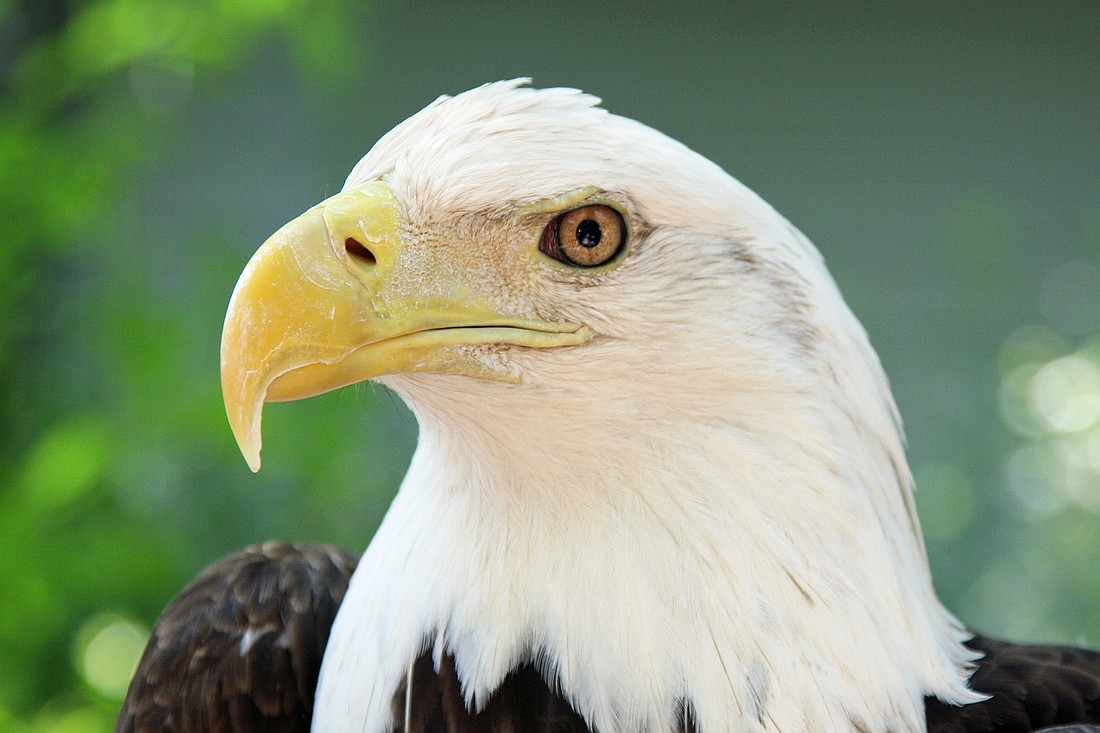- April 18, 2024
-
-
Loading

Loading

Florida’s bald eagle population will be flying high for many years to come.
And for that, there was more than fireworks to be excited about this Independence Day.
The community got together at Audubon Center for Birds of Prey in Maitland on July 3 to celebrate a milestone: Florida recently surpassed Minnesota as the No. 1 state in the lower 48 for active eagle nests with more than 1,400 pairs documented in the state's 2011 survey.
“What a day to celebrate,” Chairman of the Florida Fish and Wildlife Commission Ken Wright said. “Not only are we celebrating the birth of our nation, but we’re also celebrating the image of our nation.”
Years ago, the bald eagle faced potential extinction in the continental United States. Now, with the help of Audubon, its Center for Birds of Prey, and the Florida Fish and Wildlife Commission (FWC), that number has exponentially increased, he said.
“Today in Central Florida alone we have more eagles and eagle nests in that area than in the entire 48 states in 1965,” said Charles Lee, director of advocacy at Audubon.
Speaking at his first event as chairman of the FWC, Wright, a resident of Winter Park, said he developed an admiration for eagles and the Center for Birds of Prey years ago when he and a friend spotted an eagle that had injured its wing on a power line.
“We were scared to death of this eagle, so we called the Birds of Prey center,” Wright said. “I knew they existed, but it’s like calling an ambulance — you don’t think about calling them, but everybody is out there working in these services, until the day you need them.”
These services have rescued, treated and released 450 eagles, making up a large chunk of the current eagle population in Florida of about 1,400 breeding pairs.
“There is a meaningful relationship in terms of those rescued eagles produced and the actual population of eagles in Florida,” Lee said. “We think that as many as a third of the eagles out there are descendants of the eagles that passed through the facility.”
Collision with motor vehicles is the highest reported cause of injury to these sacred birds.
“Annually, we receive a little over 600 patients a year,” Audubon program manager Kate Warner said. “We used to only see about 10 percent eagles, but now we’re seeing a lot more eagles in the past year.”
And rehabilitation is no cheap venture.
“If an eagle comes in the door and has anything more than superficial injuries, we’re probably looking at $3,000 to $5,000 before that bird can be released back into the air,” Lee said.
And money isn’t overflowing into Audubon.
Going back to school this year could be a lot more exciting. Audubon plans to release dates for upcoming visits to local schools that will feature many different birds of prey. Audubon Center for Birds of Prey is located at 1101 Audubon Way in Maitland. For more information, visit fl.audubon.org
“Audubon gets zero dollars,” Lee said. “This is an effort that comes from the heart of volunteers.”
Audubon boasts more than 250 volunteers who work in the field and constitute the eagle-watch network to ensure that the laws protecting the nests are adequately enforced.
“The success of our wildlife that we’ve seen with eagles, bears and the management of these animals is key to protecting the environment of the whole state,” Wright said.
The population of our nation’s birds will continue to increase, FWC representatives say, as long as everyone cooperates in the efforts to protect them.
Michelle Van Deventer, Eagle biologist at FWC, says that one way people can help is by not getting too close.
“When people see eagles, they get very excited and they’re very popular in photographs,” Van Deventer said. “So, not loving them as much and showing good eagle etiquette when we’re watching them in the wild, keeping a safe distance from the nest is helpful.”
In addition to toning down on the paparazzi, public awareness of nests and preserving large areas of these nests is crucial to the long-term success of the eagle.
“Florida’s Fish and Wildlife Commission has been outstanding in Florida and has a great track record with bringing species back,” Lee said.